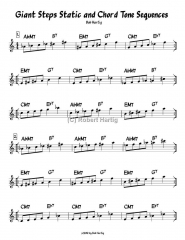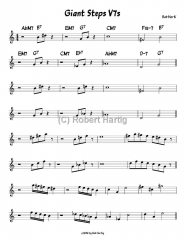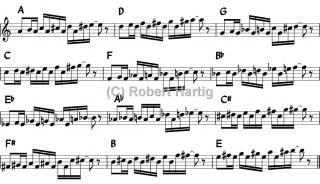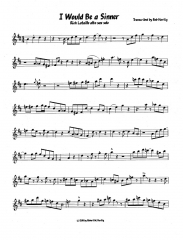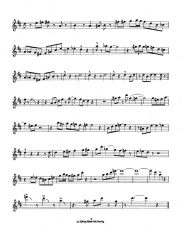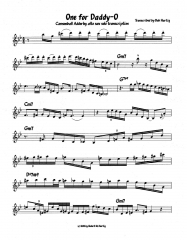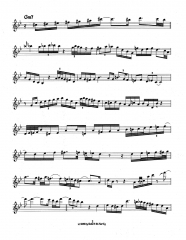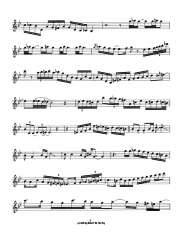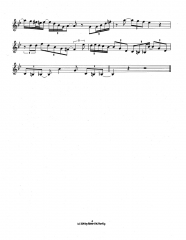Here are some more exercises on the Giant Steps cycle. (Click on the image to enlarge it.) While it might not be immediately apparent, the linear patterns shown here are actually a continuation from my previous post on isolating V7s in the cycle. Note that the V7 chords are still spotlighted by emphasizing them with quarter notes, which are led into by the preceding grouping of eighth notes. Think of the dominant harmonies as target tones preceded by a walk-up.
In these exercises, I’ve elected to focus on the treadmill-like cycle of Coltrane changes rather than the full eight-bar A section of “Giant Steps.” As is typical of so much of the practice material in my posts, what you’re getting here comes straight from my own current explorations and discoveries in the woodshed
Don’t be cowed by this post’s heady subtitle, “Static and Chord Tone Sequences.” I’m just not sure how else to describe this material. The goal I’m after is to work with linear sequences that will drill the shifting tone centers of Coltrane changes into my fingers. (Geeze, that still sounds murky as all get-out. Oh, well. Deal with it.)
Since I’m an alto sax player, I’ve written these exercises in the Eb transposition. If you play a Bb or a C instrument, you’ll need to transpose accordingly.
Exercise one proceeds through the entire Giant Steps cycle in three bars. The first three-bar cycle starts on Ab; the second, on E; and the third, on C. In each series, I’ve kept the first note of each measure as static as possible, shifting it by just a half-step in the third measure to accommodate the change in key.
In exercise two, the harmony continues to repeat itself (i.e. AbM7 to B7, back and forth) while the starting tone for the eighth-note groupings shifts, progressively, from the root to the third to the fifth.
In both exercises, pay attention to which target tones you arrive at in the dominant seventh chords.
And that’s enough of me talking. Dig in, engage your analytical thinking along with your fingers–and, as always, have fun!
Oh, yeah–if you enjoyed this post, please check out my many other articles, practice exercises, solo transcriptions, and video tutorials for improvising musicians.
